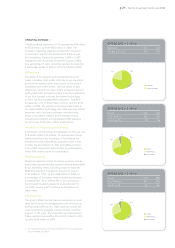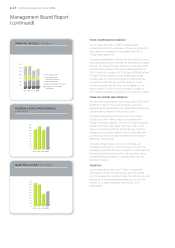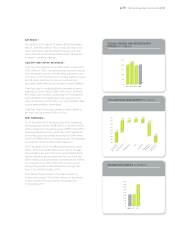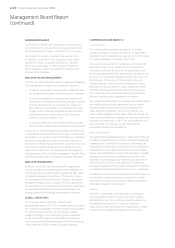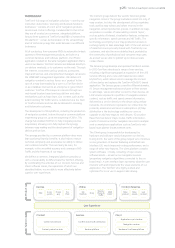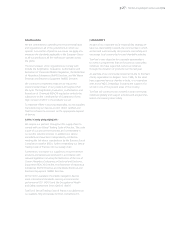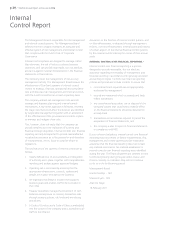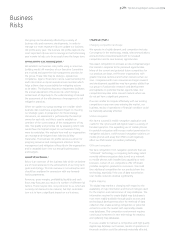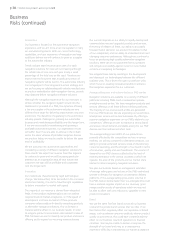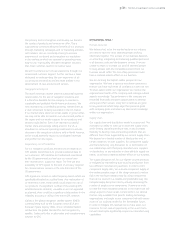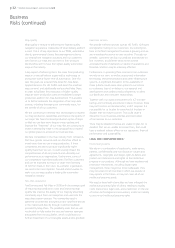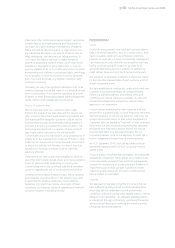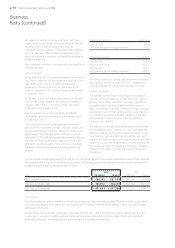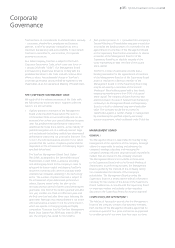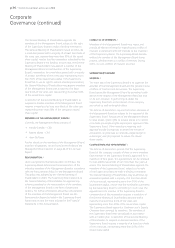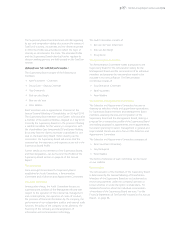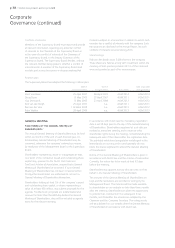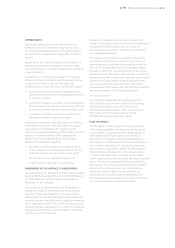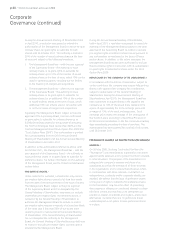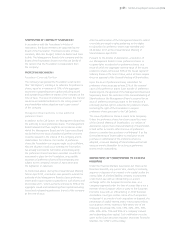TomTom 2010 Annual Report Download - page 33
Download and view the complete annual report
Please find page 33 of the 2010 TomTom annual report below. You can navigate through the pages in the report by either clicking on the pages listed below, or by using the keyword search tool below to find specific information within the annual report.p 31 / TomTom Annual Report and Accounts 2010
Our primary tool to strengthen and develop our brand is
the quality of products and services we offer. This is
supported by communicating the benefits of our products
through marketing campaigns and co-marketing activities
with retailers. We are constantly striving to increase
awareness of our brand and strengthen our reputation
in the markets in which we operate for providing smart,
easy-to-use, high-quality, desirable navigation solutions
that meet customer needs in innovative ways.
We aim to enhance our full user experience through our
services and customer support. Further we have a team
dedicated to understanding the user experience of all
our products and services and this team advises in the
development of new products and services.
Geographical footprint
The North American market presents substantial business
opportunities for the sale of navigation solutions and
it is therefore desirable for the company to maintain a
sustainable and profitable North American business. We
view maintaining, or preferably growing, market share as
a vital component to being successful in the US market.
If our market share does not remain stable or grow further,
we may not be able to maintain our volume and profits in
the region and our retailer support for our products and
services could decline. Even if we maintain successful
market share and average selling prices in the US, a
slowdown in consumer spending could lead to a volume
decrease in the navigation solutions sold in North America,
which would adversely impact our anticipated revenues
and profits from the region.
Dependency on GPS satellites
For our navigation products and services we depend on
GPS satellite transmissions to provide positional data to
our customers. GPS satellites are funded and maintained
by the US government and we have no control over
their maintenance, support or repair. The free use and
availability of GPS signals to the level of accuracy required
for commercial use remains at the sole discretion of the
US government.
GPS signals are carried on radio frequency bands which are
specifically allocated on a global basis. Any reallocation of,
or interference with, these bands could impair the use of
our products. If a significant number of the existing GPS
satellites become obsolete, unusable or are not upgraded
as planned, there could be a significant deterioration in the
reliability, accuracy or utility of the entire GPS network.
Galileo is the global navigation satellite system (GNSS)
currently being built by the European Union (EU) and
European Space Agency (ESA). Once completed Galileo
will become the global standard for civil navigation by
satellite. Galileo will offer an alternative and complementary
solution to GPS.
OPERATIONAL RISKS /
Human resources
We believe that, to be the market leader in our industry,
we need to have the most talented people working
effectively together. The success of our business depends
on attracting, integrating and retaining qualified personnel
in all business units and development centres. If we are
unable to retain or increase our pool of talented people
to keep abreast with the competitive environment our
business would suffer. The loss of key personnel could
have a material adverse effect on our business.
We aim to bring the highest calibre people into our
organisation. We have a rigorous recruitment process so
that we can have high levels of confidence in who we hire.
To retain talent within our organisation we monitor the
organisational health of the company and manage cultural
aspects accordingly. Top performers in the company are
rewarded financially and given opportunities to develop
and expand their careers. Long-term incentives are given
to key personnel which helps align their personal goals
with company goals and retain key talent and knowledge
within our organisation.
Supply chain
Our supply chain and distribution model is outsourced. This
increases our ability to scale up or down the supply chain,
while limiting capital expenditure risks. It also increases
flexibility to develop new and exciting products that are
different from those supported by our current supply chain.
We depend on a limited number of third parties and, in
certain instances, on sole suppliers, for component supply
and manufacturing. Any disruption to, or termination of,
our relationships with third party manufacturers, suppliers
or distributors, or any reduction in their ability to supply our
needs, could have a material adverse effect on our business.
The supply disruption risk for our highest volume products
is mitigated by maintaining dual-sourcing production from
two different manufacturing partners. In order to limit
component supply risks, we evaluate component supply at
the earliest possible stage of the design process to reduce
risk in the hardware design phase by using components
that can be sourced in a reliable and predictable way. We
mitigate supply disruption risks by actively minimising the
number of single source components. However in order
to have the most innovative products in the market we will
always expect to have certain components in our devices
that are only available from specific leading technology
organisations and single source component risk will remain
a part of our business model for the foreseeable future.
In order to mitigate this residual risk we have taken out
insurance for lost market opportunity in the event that a
natural catastrophe significantly impairs our manufacturing
capabilities.


